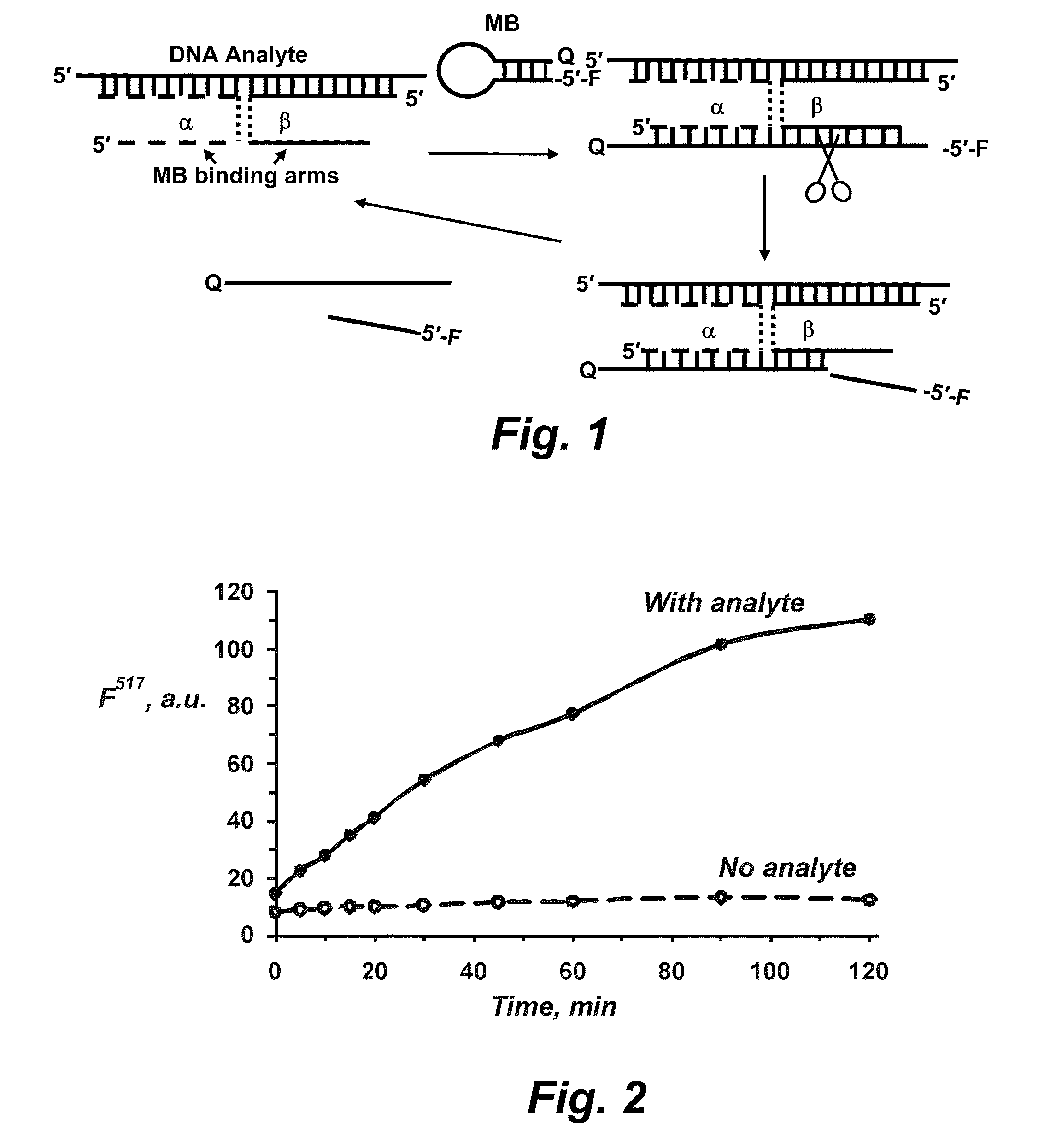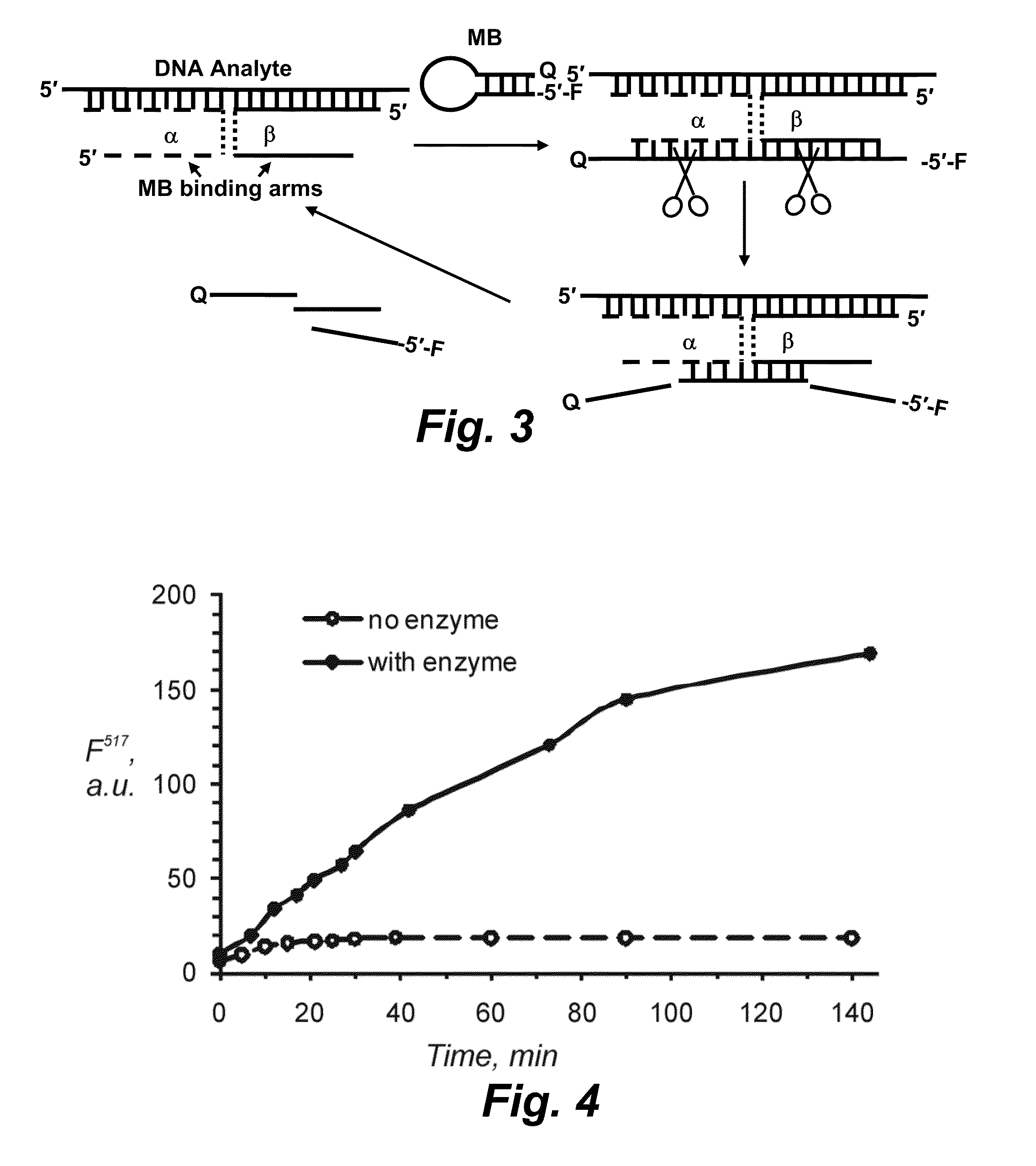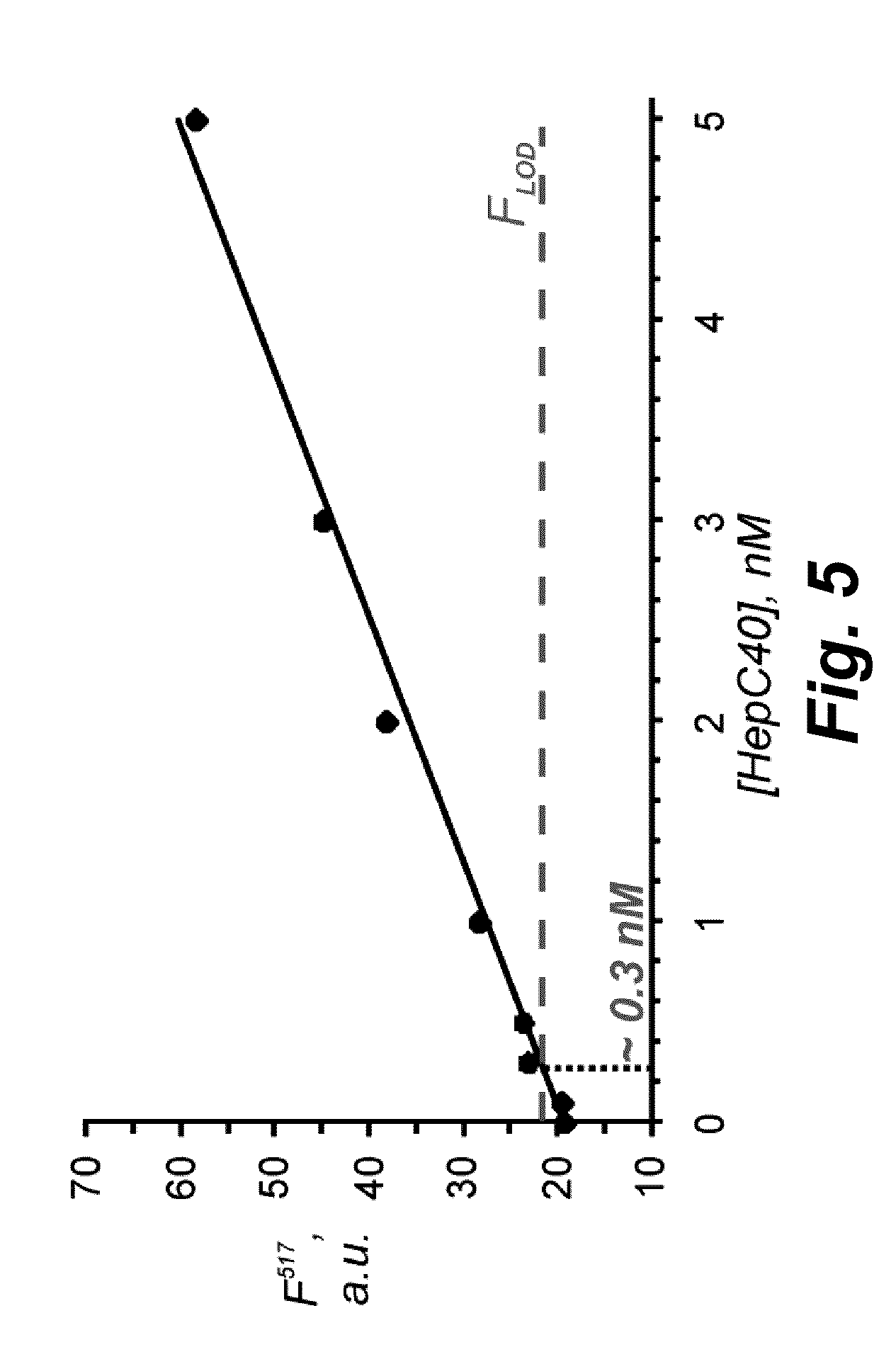Binary probe system for sensitive detection of target analytes
a target analyte and binary probe technology, applied in the field of specific analytes detection systems using binary probes and reporter oligonucleotides, can solve the problems of limiting the application of molecular beacon probes in snp genotyping, high background fluorescence, and high synthetic cos
- Summary
- Abstract
- Description
- Claims
- Application Information
AI Technical Summary
Problems solved by technology
Method used
Image
Examples
example 1
[0123]One embodiment of the system of the present disclosure provides a molecular beacon (molecular beacon), which acts as a reporter, and two DNA strands: strand a and strand p. Each of the strands contains a fragment complementary to molecular beacon (molecular beacon-binding arm) and a fragment complementary to a DNA analyte. In the presence of the analyte, the probe forms a quadripartite complex, in which BDP strands serve as adaptors to connect the analyte and the molecular beacon reporter. The molecular beacon-binding arm of BDP strand β is complementary to the molecular beacon fragment, which contains a single ribonucleotide embedded into DNA sequence. RNase HII recognizes the ribonucleotide-containing duplex fragment and cleaves the phosphodiester bond at the 5′-end of the ribonucleotide. As a result, the molecular beacon is hydrolyzed into two fragments, which dissociate from the quadripartite complex. The resulting tripartite complex of the analyte with two strands of Enz-...
example 2
[0124]Referring now to FIG. 2, another embodiment of the disclosure provides fluorescence enhancement of Enz-BDP1 together with RNase HII in the presence or in the absence of the analyte HepC30. Reaction conditions: 10 nM molecular beacon 1, 100 nM strands α and β, 10 nM HepC30; 2U RNase HII; 20 mM Tris-HCl, pH 8.8; 10 mM (NH4)2SO4, 10 mM KCl, 25 mM MgCl, 0.1% Triton X-100; 30° C.
example 3
[0125]Referring now to FIG. 3, another embodiment of the disclosure provides a design of Enz-BDP2. The probe consists of a reporter oligonucleotide (in this example, but not limited thereto, a molecular beacon) and two DNA strands: strand α and strand β. Each of the strands contains a fragment complementary to the reporter oligonucleotide (reporter oligonucleotide-binding arm) and a fragment complementary to a DNA analyte. In the presence of the analyte, the probe forms a quadripartite complex, in which BDP strands serve as adaptors to connect the analyte and the reporter oligonucleotide. Reporter oligonucleotide-binding arms of the BDP strands are complementary to two reporter oligonucleotide fragments, each of which contains a single ribonucleotide embedded into DNA sequence. RNase HII recognizes the duplex fragments and cleaves the phosphodiester bond at the 5′ end of the ribonucleotide. As a result, reporter oligonucleotide is hydrolyzed into three fragments-the fluorophore-cont...
PUM
 Login to View More
Login to View More Abstract
Description
Claims
Application Information
 Login to View More
Login to View More - R&D
- Intellectual Property
- Life Sciences
- Materials
- Tech Scout
- Unparalleled Data Quality
- Higher Quality Content
- 60% Fewer Hallucinations
Browse by: Latest US Patents, China's latest patents, Technical Efficacy Thesaurus, Application Domain, Technology Topic, Popular Technical Reports.
© 2025 PatSnap. All rights reserved.Legal|Privacy policy|Modern Slavery Act Transparency Statement|Sitemap|About US| Contact US: help@patsnap.com



